Should Your ELN Just Be A User Interface To Your LIMS?
Thomas P. Boesen, Ph.D., Founder & CEO, Scifeon
April 2022
Classic paper-on-glass ELNs are often described as dead-end data dumps. For compliance and IP reasons, scientists are required to comprehensively document their work in the ELN. But the more your ELN looks like a word processor, the less reusable and valuable the resulting content becomes. Which is unfortunate, since that very content is the main result of your investment in research and development. There should be a way to enrich the content in your ELN to increase the accessibility, findability, and reusability of your laboratory results in order to greatly increase its value
PAIN
The classic ELN is a bane of scientific research and development. Created as “paper on glass”, mimicking the paper-based lab notebook on the computer, the content is a mix of prose, calculations, “glued-in” (i.e. pasted) gel images or printouts etc., with everything meticulously numbered, signed and counter-signed. It serves as documentation of the work that was done, but when you need to use the data, the only option is to manually read the content.
Not having to fetch the physical book is an advantage, of course, but other than that, the content is effectively locked away, accessible only to the scientist that wrote the entry.
CURRENT ALTERNATIVES
The typical solution to this issue is to duplicate your records – performing your data processing in e.g. Microsoft Excel files and storing these files with cross references from the ELN. That way, you typically end up with thousands and thousands of Excel files with more or less systematic records of the experiments and metadata such as laboratory conditions (e.g., temperature, humidity), procedures, sample history, reagents and so forth.
Alternatively, a custom database solution or a LIMS (laboratory information database system) is used for recording this information, providing good support for sample traceability and for storing results. But they lack the flexibility to keep up with exploratory laboratory processes, and they lack support for storing your lab notes and a variable metadata set. Typically, the interfaces of these systems are very poor: They are not customized to the actual lab procedures, and registering data in a LIMS is basically duplicating the work from the ELN registration.
Data registration is generally done only as much as required, not providing the comprehensive records that would really provide the optimal data set needed for advanced analytics and data science. user
THE SCIFEON SOLUTION
Scifeon has built our ELN the other way around. The platform started out as a laboratory workflow management system with sample tracking and result registration functionality. We then built the ELN on top of these structured data management modules.

Entering your ELN records will also register samples with metadata, lab operation with metadata, bioregistry records (proteins, compounds, plasmids, cell lines etc.) as well as measurements and results.
Workflow management is an essential element of modern lab operations. Managing and orchestrating activities is critical to moving projects forward effectively. When workflow management is integrated into the ELN, you have live records of which steps are planned, in progress or completed – enabling the system to help coordinate the activities of the multitude of people working in your lab as well as other departments and CROs.
METADATA AND AUTOMATED DATA PROCESSING
When sample records are created as part of your ELN entries as well as choice of procedures with parameters, these metadata can be stored in a structured way in the database behind your ELN. It does not need to be only prose and tables in wordprocessing format.
Furthermore, the system can be customized to do the processing of instrument output files, automatically extracting as much information as is available in the files into a structured database. This will ensure that your data scientists have a comprehensive dataset available, rather than spending 90% of their time locating and organizing data and just 10% doing actual data analysis.
FAIR
FAIR is gaining momentum in academia (promoted by EU grant requirements) and in an industry seeing most of the value of their research and development lost in inaccessible records.
FAIR (Findable, Accessible, Interoperable and Reusable) are noble aspirations for your scientific records; you might even say it should be a matter of course. But it is very far from being current state-of-the-art.
Improving registration of metadata will greatly improve the FAIRness of your laboratory records and results, not only meeting compliance with EU grant requirements but also enriching your data for internal use.
CUSTOMIZATION
To fully realize the benefits of digitalization, you need an IT system that matches your workflows, i.e., that it can facilitate data entry and validation, help you with automated processing and assist in driving workflows.
Scientific laboratories often have complex processes that require customization (coding) to be supported. This includes the importing of instrument output files and the scientific calculation performed on results.
For this reason, Scifeon has been created as a development platform that enables users or consultants to build customized workflow setup, ELN data processing modules and user interface elements as well as data-loaders that import data from files, combine with data from the database and perform customized calculations. Moreover, the customization can involve creation of new database tables and fields
CONCLUSION
Your ELN should be a tool that helps your scientists in their daily work, not an extra burden to take care of after their “real work” is over. Moreover, your ELN should help ensure data integrity and traceability by promoting registration during the execution of lab work. Finally, your ELN should drive enrichment of data with comprehensive metadata to facilitate analytics on FAIR data.
The old paper-on-glass paradigm is ripe for replacement.
